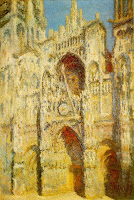"From Impressionism to the 21st Century" Essay:
This should be submitted on the first day back. Thanks to all of you who have sent me your choices of Artworks, those stragglers who I yet to hear from please get your act together - I can only help and advise you if you communicate with me!
There is quite a lot of structured advice on how to write the essay in the assignment brief and the checklist - use these closely when you set about the writing. It is particularly important to ensure that your introduction and conclusion are well composed and thoughtful passages - when you go to HE interviews snippets from these sections are likely to be what is read. You may find it easiest to start by writing about some of your selections, then address the introduction and conclusion when you have gained a deeper understanding of the individual works in your exhibition.
You will need to bind your assignment at the LRC on the Monday when we return (approx. 80p for a card back/acetate front & comb binder).
Illustration Project
We are not setting additional work for illustration over Easter, as we want the essay to be your main focus. When you get back we will have 2 weeks to select images, scan and upload to an online book printing service.
As has been mentioned this week you should look at one Collage based illustrator to support the mixed media work we have been doing - make sure this is someone different to those you researched in the Architecture project. Some you might consider are Mario Wagner, Nazario Graziano, Tim Marrs, Martin O'Neill, Eduardo Recife or Mark Powell.
 |
| Eduardo Recife |
 |
| Mark Powell |
- 2 Photographic images (edited).
- 2 Expressive pieces of drawing.
- 2 Sustained pieces of drawing.
- 2 Images created as responses to Illustrators.
- 2 pieces of printmaking.
- 2 pieces of mixed media collage.
 |
| Oliver Jeffers |
An overall progress checklist for Illustration is here:
- Research into Roald Dahl (1 page is fine)
- Research into Quentin Blake's illustrations for Dahl's books, include reproductions of his work, background information, analysis of his style and at least one visual response. (2 pages)
- Research into 2 films inspired by the works of Roald Dahl, some background information, justified personal opinion and images from the films (1 page for each film).
- At least 3 pages of storyboarding for your photoshoot, this should be a mix of quick sketches and annotation. Sketches should explore potential compositions for photos; annotation should include quotes from the book that you are illustrating and lists of requirements (models, postures, expressions, locations, props, costume, make up, lighting etc.).
- 1 or more pages showing some good examples of existing storyboards, with brief analysis.
- Contact sheets of prints from your photoshoot.
- Larger prints (A4/A5) of a range of your best shots.
- Research into one narrative photographer with fantastical elements - e.g. Annie Liebovitz, Ruven Afanador, Viona Ielegems, Tim Walker. 2 pages with imagery, background and some of your own analysis of a couple of specific shots, consider what practical steps went into creating the image we see. So discuss location, models, postures, costume, props, make up, composition, lighting, camera angle, post-production.
- At least 2 sustained full page careful observational drawings from your photographs, use different media for each of these - e.g. one tonal image in pencil, and one piece in biro. Fine liners or coloured pencils might be other media to consider using for these controlled pieces.
- 4 or more quick expressive drawings.
- Research into 2 narrative illustrators, these MUST be one historical and one contemporary practitioner. In this research it is important to give background biographical information on each illustrator, analyse some specific images in terms of content, technique and media and justify your own opinions on the work. You also need to compare the illustrators from different eras and describe how you feel illustration has changed over time. This research is set to meet the requirements of the Narrative Illustration Unit, so MUST be done well.
- Using your own photographs as inspiration produce 2 interpretations of your images in the style of each illustrator you have researched - that is 4 illustrations in total. Take time over these and do your best to really replicate the style and use appropriate media.
- A second photoshoot (ideally if your first was in the studio then this should be done on location). Injecting your project with fresh imagery is key to achieving a good final book.
- 2 Gold Card plates cut with a range of prints taken from them, one of these should be an ambitiously scaled piece (A3).
- 2 or more good pieces of monoprinting.
- A few selective colour/invert experiments on the copier from either your drawings or prints.
- 4 well resolved mixed media Collage images integrating the best of your drawing and printing along with other elements and text.
- Ideally you should also complete some Photoshop developments from your Collage images.
- Research into a Collage based illustrator (see above).












